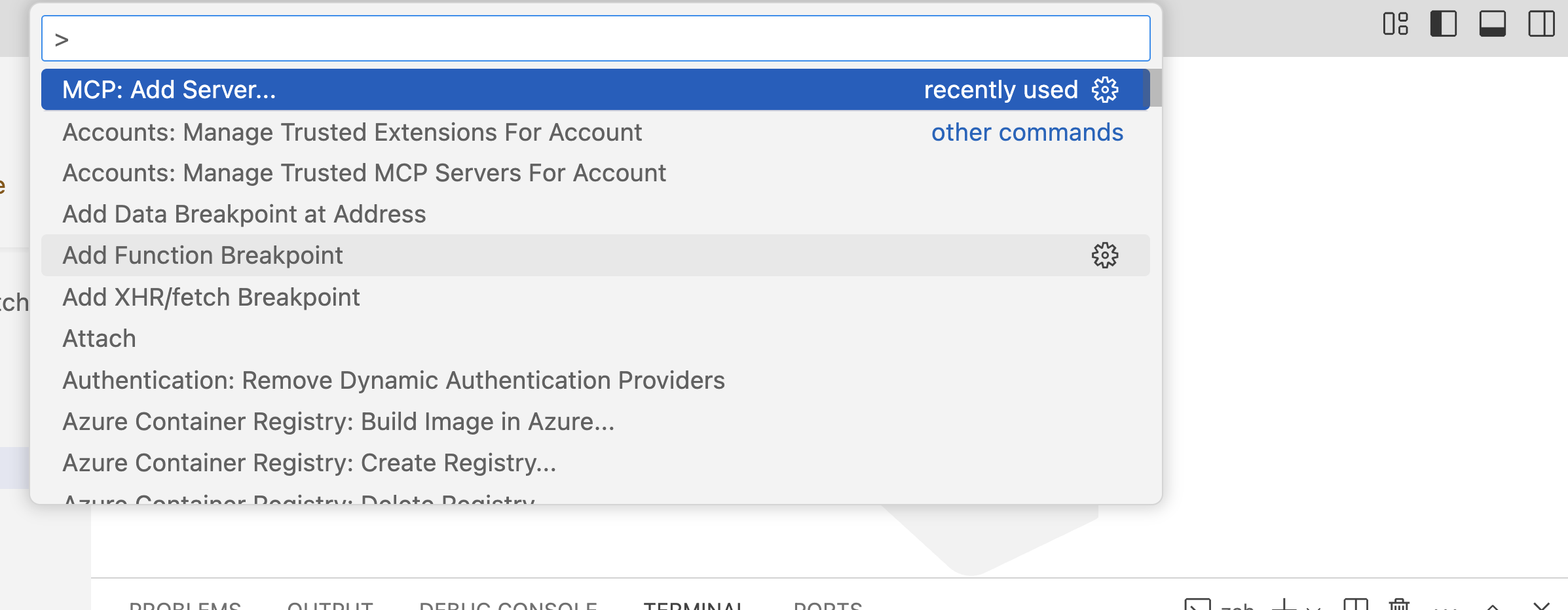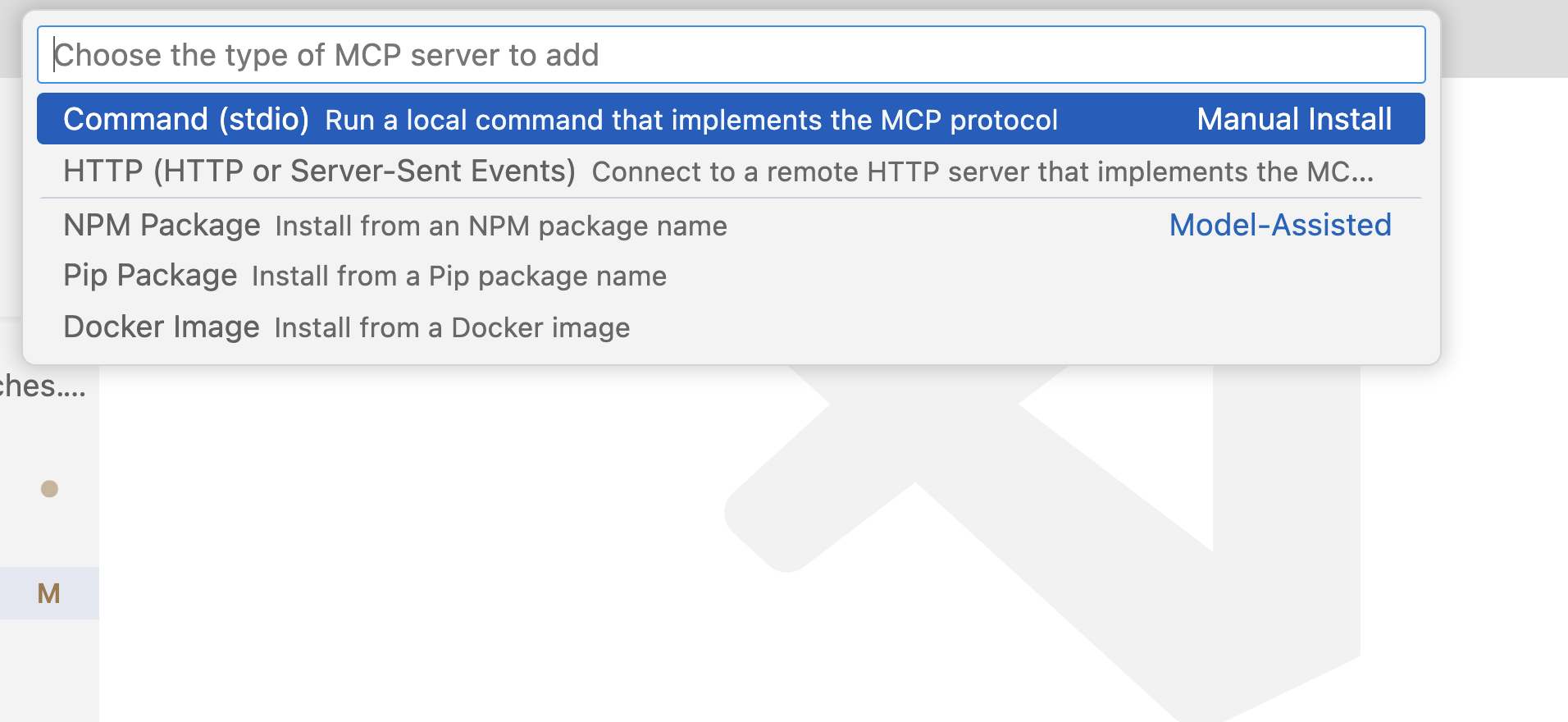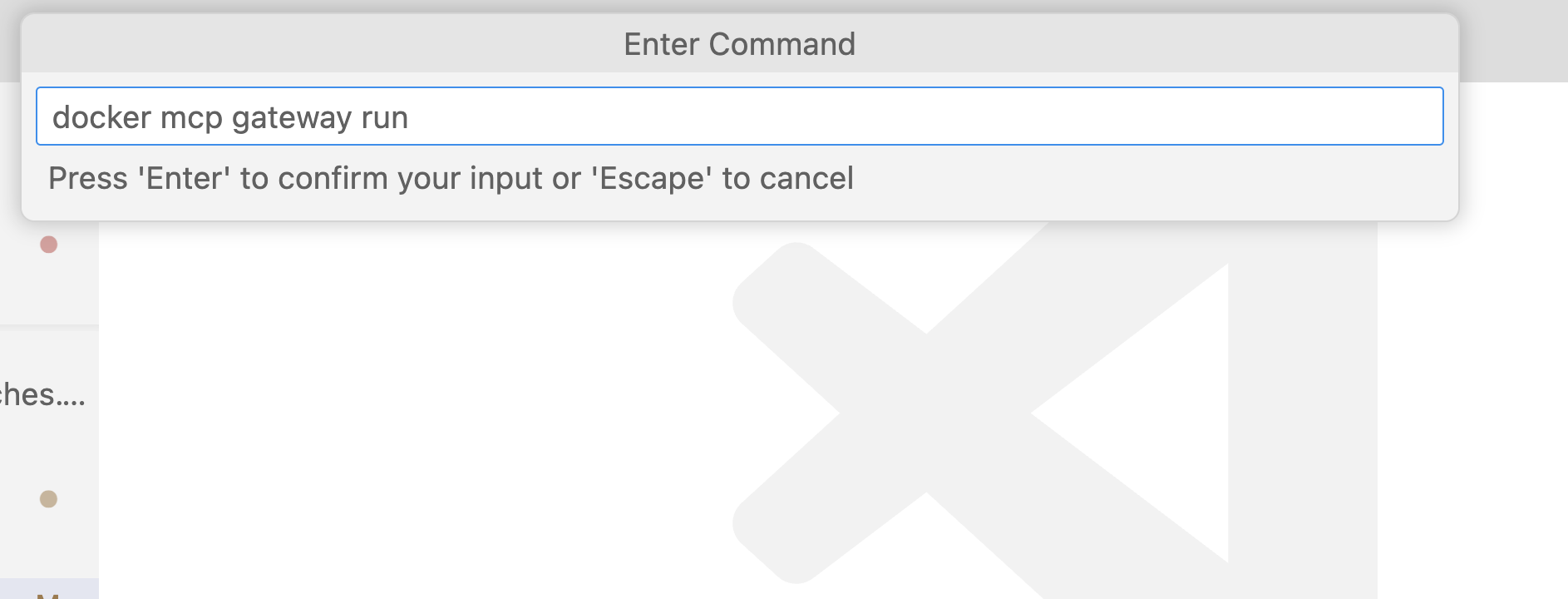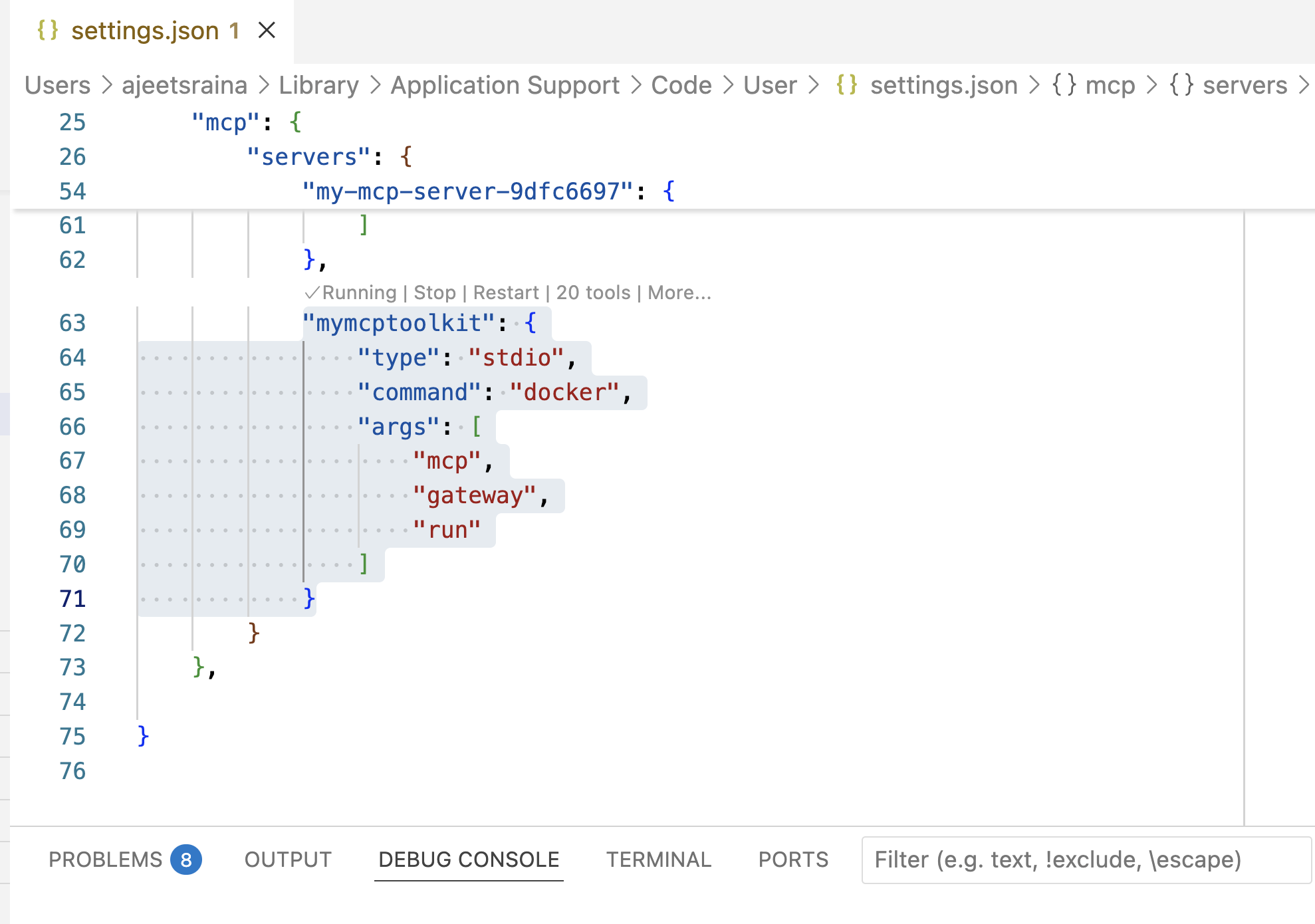Docker MCP Server and VS Code

Prerequisites
Before we start, make sure you have:
- Docker Desktop 4.41.0+ with the MCP Toolkit Extension installed
- Node.js (v18 or later) for running the frontend
- VS Code (or any IDE of your choice)
Setting Up the Sample Database
Instead of using an empty Postgres database, let's use a real example with actual data. We'll use a sample product catalog service:
Step 1. Clone the sample catalog service
git clone https://github.com/ajeetraina/catalog-service-node
cd catalog-service-node
Step 2. Start the backend services (includes Postgres with sample data)
docker compose up -d --build
This will spin up:
- A Postgres database on port 5432 with sample catalog data
- A Node.js backend service
- Sample data including products, categories, and inventory
Now let's bring up the frontend to see what data we're working with:
Step 3. Install frontend dependencies
npm install
Step 4. Start the development server
npm run dev
Open your browser to `http://localhost:5173 to see the catalog application. This gives you a visual understanding of the data structure we'll be querying with Claude.
Hit "Create Product" button and start adding the new items to your Product catalog system.
Perfect! Now we have a realistic database to work with instead of an empty one.
Step 5. Setting up MCP Toolkit
Open Docker Desktop and navigate to the MCP Toolkit section in the sidebar.
Enable Docker MCP Server

Step 6. Configuring the VS Code
Open your VS Code and install the MCP Toolkit extension if you haven't already.
Step 7. Add MCP Server






Step 8. Using GitHub Co-Pilot
It's time to use GitHub Co-Pilot to interact with the Docker CLI MCP server. Select Agent under Co-Pilot and select tools that are available to chat.

Step 8. Chatting with GitHub Co-Pilot
Prompt: "list out all the containers running on my Docker Desktop"

Troubleshooting:
In case you face the following issuse:
Reason: You may not include more than 128 tools in your request.
The fix is to reduce the number of tools in your request to 128 or fewer. You can do this by selecting only the necessary tools you want to use with GitHub Co-Pilot.